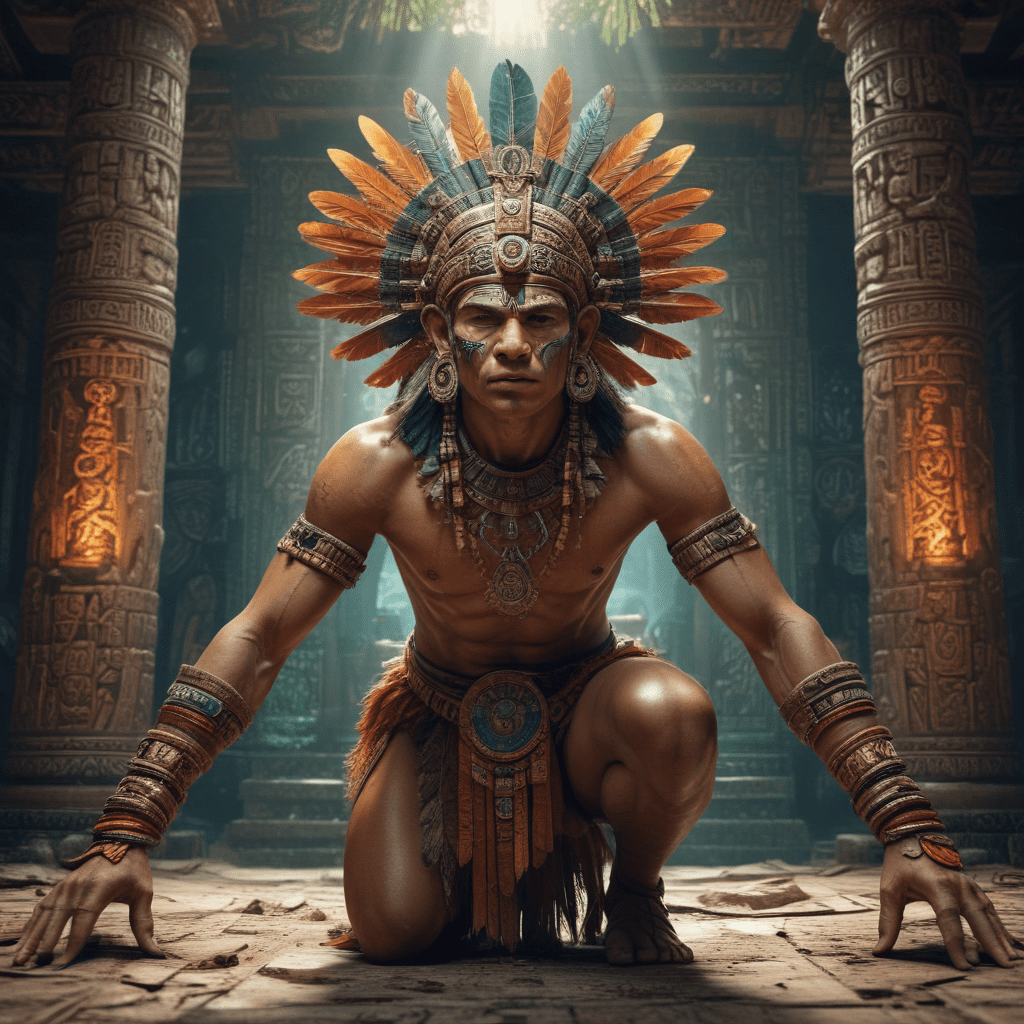1. Introduction
Welcome to the fascinating world of Mayan mythology and the sacred Ballgame! This ancient Mesoamerican sport, deeply intertwined with mythology and culture, was far more than just a game. It was a ritual, a spectacle, and a microcosm of the Mayan worldview, reflecting their beliefs about the cosmos, rulership, and the delicate balance between life and death.
2. Origins of the Ballgame
The exact origins of the Ballgame remain shrouded in mystery, but archaeological evidence suggests it emerged around 1600 BCE in Mesoamerica. It spread throughout the region, becoming a prominent feature of Mayan civilization. Ballcourts, specialized playing fields, have been discovered across the Mayan world, from the lowlands of Guatemala to the highlands of Mexico.
3. The Mythology of the Ballgame
Myths and legends surrounding the Ballgame abound in Mayan lore. One prominent story tells of the Hero Twins, Hunahpu and Xbalanque, who faced the Lords of the Underworld in a ballgame with cosmic stakes. Their victory symbolized the triumph of life over death and the renewal of the world. The Ballgame, in this context, becomes a metaphor for the eternal struggle between order and chaos, light and darkness.
4. The Ballgame Rituals and Games
The Ballgame was a complex ritual, imbued with symbolic meaning. Elaborate ceremonies preceded the game, including offerings to the gods and purification rituals. The game itself was played with a heavy rubber ball, propelled by the players' hips, elbows, or knees. The goal was to pass the ball through a stone hoop mounted high on the court walls.
5. The Symbolism of the Ballgame
The Ballgame's symbolism extended far beyond the physical act of playing. The ball itself represented the sun, the moon, and the cyclical nature of time. The hoop symbolized the portal to the underworld, and the court, a microcosm of the cosmos. The players, often adorned with elaborate costumes and masks, embodied deities and mythical figures. Every aspect of the game resonated with deeper meaning, connecting the human world with the realm of the gods.
6. The Ballgame and Mayan Cosmology
The Ballgame was deeply intertwined with Mayan cosmology, reflecting their understanding of the universe and its workings. The court represented the cosmos, with the central line dividing the world into the realms of the living and the dead. The hoop symbolized the entrance to the underworld, and the ball, the celestial bodies moving across the sky. The players, in their movements and actions, mirrored the cyclical patterns of the universe.
7. The Ballgame and Mayan Rulership
The Ballgame played a significant role in Mayan rulership. Rulers often participated in the games, demonstrating their strength, agility, and connection to the gods. Victories in the Ballgame were seen as divine endorsements, legitimizing their authority and ensuring prosperity for their people. The losers, however, faced dire consequences, including ritual sacrifice.
8. The Social and Political Significance of the Ballgame
The Ballgame transcended its ritualistic and political functions, holding social and cultural significance. It served as a platform for community gatherings, fostering social cohesion and competition. The games were also spectacles of entertainment, drawing large crowds and generating excitement. The Ballgame, therefore, played a vital role in shaping Mayan society and its cultural identity.
9. The Ballgame in Art and Architecture
The Ballgame's importance is evident in its prominent presence in Mayan art and architecture. Ballcourts are found in many Mayan cities, often adorned with elaborate carvings and murals depicting scenes from the games. Pottery, sculptures, and codices also feature representations of the Ballgame, showcasing its significance in Mayan culture.
10. The Ballgame: A Legacy of Mayan Culture
The Ballgame remains a testament to the ingenuity and complexity of Mayan civilization. It was more than a sport; it was a ritual, a spectacle, and a reflection of their worldview. Though the game itself is no longer played, its legacy endures in the archaeological remains, the myths and legends, and the artistic expressions that continue to inspire and fascinate us today.
FAQ:
What was the purpose of the Ballgame?
The Ballgame served multiple purposes, including religious rituals, entertainment, political displays, and social gatherings.Who played the Ballgame?
The Ballgame was played by individuals from all social strata, including rulers, warriors, and commoners.How was the Ballgame played?
The Ballgame was played with a heavy rubber ball that was passed through a stone hoop mounted on the court walls using the players' hips, elbows, or knees.
What was the significance of the Ballgame?
The Ballgame held profound religious, political, social, and cultural significance for the Mayan people.Where can I learn more about the Ballgame?
You can learn more about the Ballgame by visiting Mayan archaeological sites, museums, and online resources.



